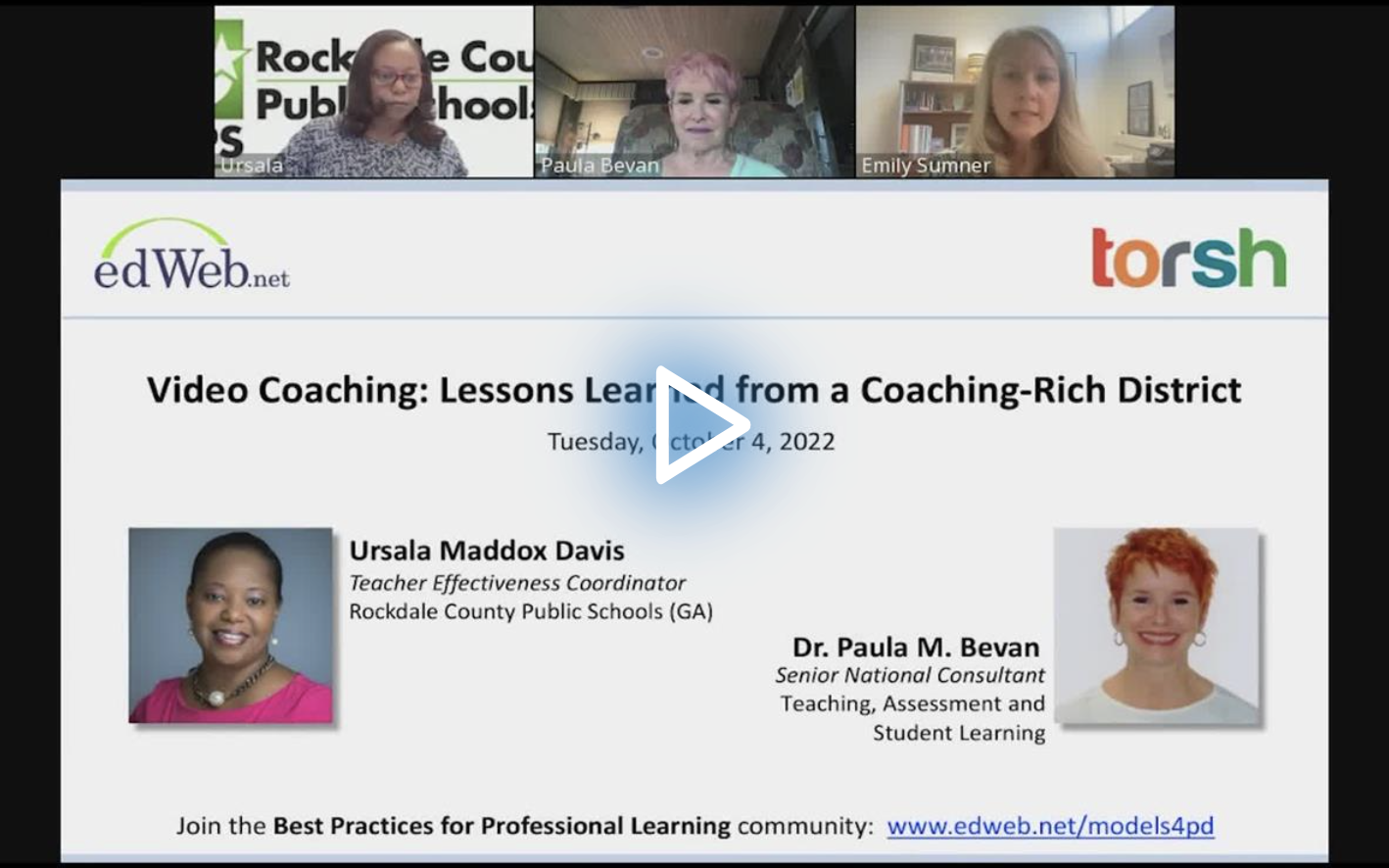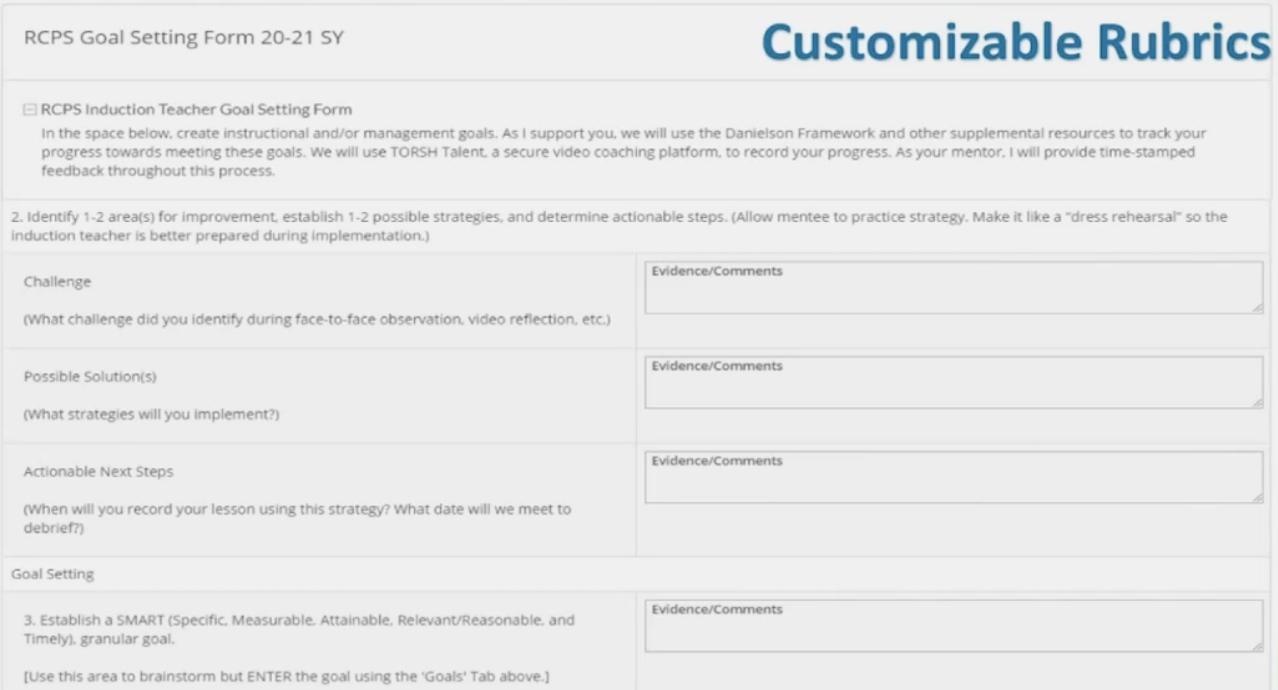Improving Instructional Practice with Video Coaching
Watch the Recording Listen to the Podcast
Coaching teachers through video is not a novel concept. The pandemic heightened its use with teachers. More schools are embracing it as a more desirable form of professional development by embedding it into instructional practice.
In the edLeader Panel, “Video Coaching: Lessons Learned from a Coaching-Rich District,” educators shared the value of video coaching, describing how it boosts teacher and student performance.
The Value of Coaching
Traditional PD usually involves teachers attending a meeting or a learning center to participate in workshops or listen to presenters. The PD isn’t job embedded and thus is not always seen as beneficial or nurturing. It tends not to help retain new teachers, keep veteran educators, or support student learning.
Dr. Paula Bevan, a national consultant for school improvement through teaching excellence, believes coaching is better PD. “If I’m someone who’s working as a coach with a teacher,” she said, “I’m working as a coach within the context of their teaching, and that automatically provides individualization for each teacher…We need to be able to look at, collect evidence of, and talk about teaching, and think about what we could modify about that teaching to improve it because it is the shortest path to student learning.”
Added Value: Video Coaching
Video coaching—a research-driven, classroom-based, individualized form of PD—is quickly becoming a preferable approach to growing instructional skills. It makes teaching and learning visible, enabling a coach to see what’s happening in the classroom and ask and discuss with teachers what they intended to do.
Launching video coaching in schools to effect instructional improvement and student achievement requires strategic planning. There is no standard implementation model; needs and approaches vary by institution.
Take Rockdale County Public Schools in Georgia. Most of its schools already had instructional coaches and digital learning specialists. It surveyed staff to learn about their coaching experiences. Responses revealed that teachers wanted more time with and support from their coaches.
The district, explained Ursala Maddox Davis, a district-level teacher effectiveness coordinator for Rockdale, needed a paradigm shift to support teachers the way they wanted through coaching. It needed to change this focus to effect improvement in student achievement.
In 2016, the district launched its initial video coaching efforts as follows:
- School administrators assigned a mentor to each induction teacher
- The mentor checked in on the teacher throughout the school year
- Teachers recorded themselves or were observed once a year, receiving feedback close to the end of the school year
But, said Davis, “It wasn’t good enough. Not just for our teachers. It wasn’t good enough for our students.” The district had to rethink the phase-in of video coaching, introducing an incremental five-year plan.
2018-2019: A pilot group of induction teachers records and uploads individual videos to share with someone in school.
2019-2020: Video coaching becomes more intentional: Induction teachers record videos and share them with their mentors, who offer commentary on their teaching.
2020-2021: The pandemic hits; face-to-face teaching is on hold, so the district is focused on virtual learning, not coaching. Video coaching drops (of course).
2021-2022: When teachers and students are back in the classroom, the district refocuses its attention on the wealth and depth of feedback teachers receive. Because teachers address students’ unfinished learning, video coaching drops but spikes again later.
2022-2023: In addition to induction teachers, the district includes teachers of concern and those who struggle. Those doing well in the classroom are recorded; the videos showcase what “good” teaching looks like.
The Coaching Process
The coaching focus is never on the number of videos recorded and uploaded but on teachers getting the targeted feedback required to improve instruction. Specific processes and parameters support this goal:
- Instructional coaches use Jim Knight’s Impact Cycle to provide non-evaluative feedback. Even if the coaches are administrators, they do not partner with the teacher in that role. They aim to establish a rapport with teachers within a “no judgment zone.”
- With the impact cycle, teachers identify, learn, and improve. They name what instruction looks like. After presenting a lesson, a coach asks teachers, “On a scale of 1 to 10, how do you rate that lesson?” Teachers self-reflect to score the lesson. It’s OK if they give themselves a 10, but they must provide student evidence to support that 10.
- A teacher centers on two improvement goals in either instruction or behavior management. The teachers use a goal-setting form and select an evidence-based strategy to address the goal. The form’s rubric guides the feedback conversation once teachers have tested the strategy in the classroom.
Video Coaching Platforms
You might wonder how to manage video coaching documentation, follow-up, rubrics, learning activities, etc. Platforms exist to support this work.
Rockdale uses TORSH Talent, for example, which facilitates video coaching and supports all professional learning activities: self-paced courses, discussion forums, coach commentary, goal setting, and tracking. Actionable, and the whole platform is supported by actionable data that help coaches and teachers identify growth areas and track progress.
The impact of job-embedded video coaching on teacher effectiveness is clear: When teachers see and reflect on their instruction, they can make those mid-course corrections. Introduce video coaching slowly to convince stakeholders that it’s a powerful PD tool, and then design a coaching structure or procedure to facilitate its use between teachers and coaches.
Learn more about this edWeb broadcast, “Video Coaching: Lessons Learned from a Coaching-Rich District,” sponsored by Torsh.
Watch the Recording Listen to the Podcast
Join the Community
Best Practices for Professional Learning is a free professional learning community where you can share experiences and ideas for the most effective, engaging, and enjoyable professional learning.

Blog post by Michele Israel, based on this edLeader Panel








Comments are closed.